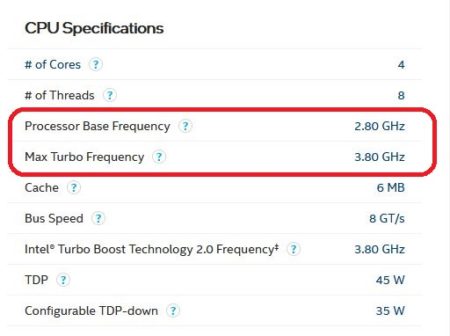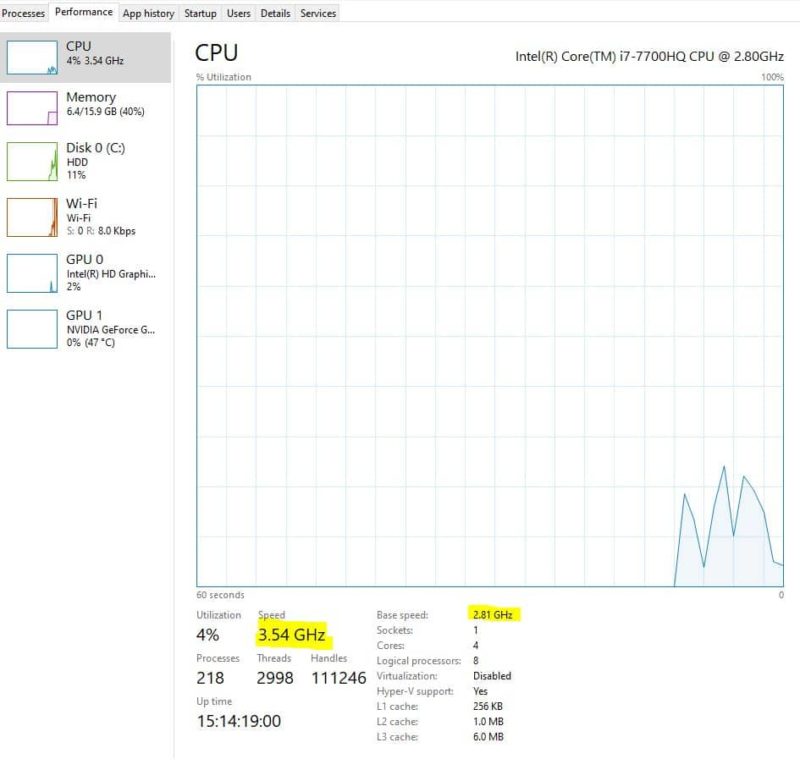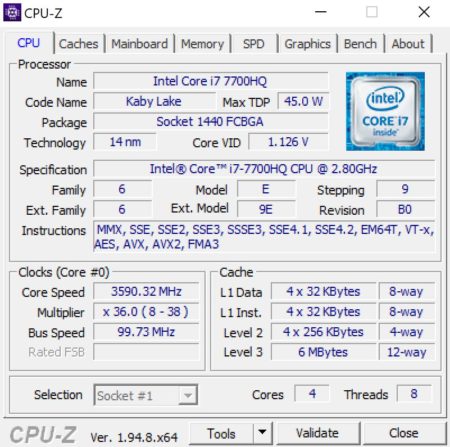There are many ways to check if your CPU is overclocked or not. Some are intuitive and easy to follow, while others require technical know-how. The three popular practices to prevent the CPU is overclocked will be reviewed in this article.
The first method is the easiest, where you use the built-in OS utilities like the task manager to check the running clock speed of your CPU. The second is to use third-party system utilities like CPU-Z to prevent the same, and the final method, a bit more technical, is to check through BIOS.
It should be noted, however, that overclocking is NOT something that happens to the CPU automatically. Overclocking is done by the user.
Also, CPUs do not come factory overclocked. So if you have just bought a new CPU and installed it yourself, it would NOT be overclocked by default.
Finally, also know that if you have been using a system for a long time and are worried that it has somehow become overclocked, then rest assured, that is impossible. As mentioned earlier, overclocking isn’t an automated process.
TABLE OF CONTENTS
Understanding Base, Turbo, and Overclock Frequencies
There are essentially three measures of clock speed that you should know before checking if your CPU is overclocked or not
1. Base Frequency (Manufacturer Specified)
The base frequency is the clock speed at which the CPU usually operates. This is the CPU’s frequency when not under stress, in an idle state, and performing lighter workloads.
The manufacturer specifies the base frequency.
2. Turbo Frequency (Manufacturer Specified)
This is the maximum speed that a processor can achieve. The CPU pushes itself to Turbo Frequency, mainly when performing heavier workloads.
While most mainstream CPUs have a Turbo frequency, entry-level CPUs like the AMD Athlon or Intel Celeron do not have the Turbo Frequency specification.
Plus, entry-level CPUs aren’t overclockable anyways.

3 Overclocked Frequency (Done By User)
Overclocked frequency is the CPU’s clock speed in which the Base and Turbo are higher than specified.
Overclocking can drastically improve the performance of the CPU; however, at the same time, it can generate a lot of heat. As such, you have to make sure that adequate cooling is provided.
Overclocking a CPU way beyond its standard clock speed can destabilize your system.
Also Read:
Which CPUs Can be Overclocked?
Having a basic idea of the CPUs and their model can tell if your CPU is overclockable or not to begin with.
No need to check if the CPU is overclocked if it isn’t even designed to be overclocked.
1. Laptop CPUs are Locked – Cannot Be Overclocked
Most laptops do not support CPU overclocking. Only a few rare extraordinary high-end laptops feature CPU overclocking support.
So unless you have a laptop that SPECIFICALLY says somewhere that it is overclockable, you do not worry about overclocking if you have a laptop.
2. Only “K” and “X” Series Intel CPUs can be Overclocked
If you have an Intel processor, check if it belongs to the ‘K” series. The Intel “K” series refers to “Unlocked” processors designed to be overclocked.
These have a “K” suffix in their name, such as
- Intel Core i7 11700K
- Intel Core i5 10600K
- Intel Core i3 9350K
The workstation grade “X” series processors can also be overlocked.
These include the likes of:
- Intel Core i9-10900X
- Intel Core i9-10980XE
Also Read: Does My Motherboard Support Overclocking?
3. All AMD Desktop CPU Can Be Overclocked
AMD, unlike Intel, supports overclocking for all of its desktop-based CPUs.
The point I am making in this section is that if your CPU falls in any non-overclockable categories, you do not need to check if it is overclocked.
Also Read:
How to Check if CPU is Overclocked?
There are three fundamental ways to check the clock speed to see if it’s overclocked. These are as follows:
- Checking through Task Manager in Windows
- Checking through CPU-Z
- Checking through the BIOS
First Things First – Find out the Base and Boost Frequency of Your CPU
Knowing your CPU’s manufacture boost frequency is pertinent to check if the clock speed exceeds the specified limit.
In my case, I am using the Intel Core i7-7700HQ.
As shown earlier above, this CPU has the following parameters
- Base Frequency: 2.80 GHz
- Boost Frequency: 3.80 GHz
If my active CPU frequency is beyond 3.80 GHz, then the CPU is overclocked. However, the CPU is not overclocked if it is less than or equal to 3.80 GHz. Simple math!
1. Checking the Clock Speed through Task Manager in Windows
The simplest way to determine if your CPU is overclocked is through the Task Manager in Windows 10.
You must know your CPU’s base and boost frequency for this method.
The following are the steps:
- Open the Task Manager by either right-clicking on the Task Bar and then selecting Task Manager or by pressing CTRL + ALT + DELETE and then selecting Task Manager.
- Select the Performance Tab and check the “Speed” provided. If this exceeds your CPU’s turbo frequency, it’s overclocked.
- You can also see the CPU’s Base Speed. If the Base frequency exceeds the manufacturer specified, your CPU is overclocked.

Since Task Manager tells you accurate time information about your CPU, you can try running different loads and monitoring the clock speed. For instance, try starting a heavy game.
If the CPU maintains a clock speed less than or equal to the Turbo Frequency under stress, then your CPU is NOT overclocked.
2. Checking through CPU-Z

CPU-Z is free software that displays detailed information about your computer hardware, including the CPU. This third-party software lets you check if your CPU is overclocked.
- Download and install the CPU-Z for Windows. Make sure you download it according to your computer architecture (32-bit or 64-bit).
- Once loaded, look for the CPU Tab – it’s selected by default on startup.
- In CPU-Z, pay attention to the “Clocks” section. In this section, the “Core Speed” field highlights the current operating frequency of the CPU. If this number exceeds the Turbo frequency specified by the manufacturer, your CPU is overclocked. It is not if it is less than or equal to the specified Turbo Frequency.
Also, you can do a simple calculation by multiplying the Bus Speed by the Multiplier. The answer will equally match the number in the “Core Speed” field.
If your CPU is overclocked, you would see a higher clock multiplier here, i.e., more significant than 38 in the case of the above CPU.
Also Read:
3. Checking through the BIOS
The final and most advanced method is to use BIOS to check if the CPU is overclocked. This is a bit technical, and it is advised not to fiddle with the BIOS settings.
Also, depending on your BIOS version, the interface may differ from user to user.
So here are the steps to this method:
- The first step is to hit the “Delete” or the “F2” key, depending on what system you have to access BIOS when the PC startup.
- Head over to the CPU Settings on your BIOS – different BIOS versions have other names for this section.
- You are looking for settings related to the CPU clock, clock multiplier/clock Ratio, and CPU VCore (CPU Voltage). If these have been increased from the default, your CPU is overclocked.
- To check the default values, reset this section of the BIOS to default. There is always a key in BIOS that you can press to change the team to its default values. If the CPU is not overclocked, this section will not change even after pressing the reset to the default key.
The following video should further explain how the overclocking process works through BIOS. This should give you further insight into whether your CPU is overclocked.
Also Read: What is CPU Throttling?
Why Check if the CPU is Overclocked?
There can be many reasons to check if the CPU is overclocked.
If your system is performing erratically, then this could warrant looking into the CPU’s frequency.
Also, if you have gone through the process of overclocking your CPU and want to ensure the operation was a success, this could warrant a check.
Also Read:
Finals Words
Here I talked comprehensively about how to check if the CPU is overclocked by using three popular methods. There are many more ways in reality.
For instance, many mid and high-end motherboards come equipped with proprietary tools for overclocking the CPU. However, not everybody has access to such devices.
It should also be highlighted here that certain low-end motherboards do not have the utility or the VRMs to overclock the CPU, even if the CPU is overclockable.
So the motherboard model can be essential in determining whether your CPU is overclocked.
FREQUENTLY ASKED QUESTIONS
1. Can overclocking damage my CPU, and if so, how?
Yes, overclocking can damage your CPU if it’s not done properly or if you push it too far. Overclocking causes the CPU to run at higher temperatures and voltages, which can cause degradation and eventual failure of the chip.
2. Is it possible to accidentally overclock my CPU, and how can I prevent this from happening?
Yes, it’s possible to accidentally overclock your CPU, especially if you have a motherboard or BIOS that allows for easy overclocking.
To prevent accidental overclocking, you can disable any automatic overclocking features in your motherboard BIOS and avoid making any changes to your CPU’s clock speed and voltage settings without proper knowledge.
3. If I discover that my CPU is overclocked, how can I safely revert it back to its original settings?
To safely revert your CPU back to its original settings, you will need to go into your BIOS settings and reset the clock speed and voltage settings to their default values.
This should return your CPU to its original clock speed and voltage and help avoid any potential damage from overclocking.
If you’re unsure how to do this, consult your motherboard manual or seek the help of a professional.
Also Read: Can B Series Motherboards Overclock?
